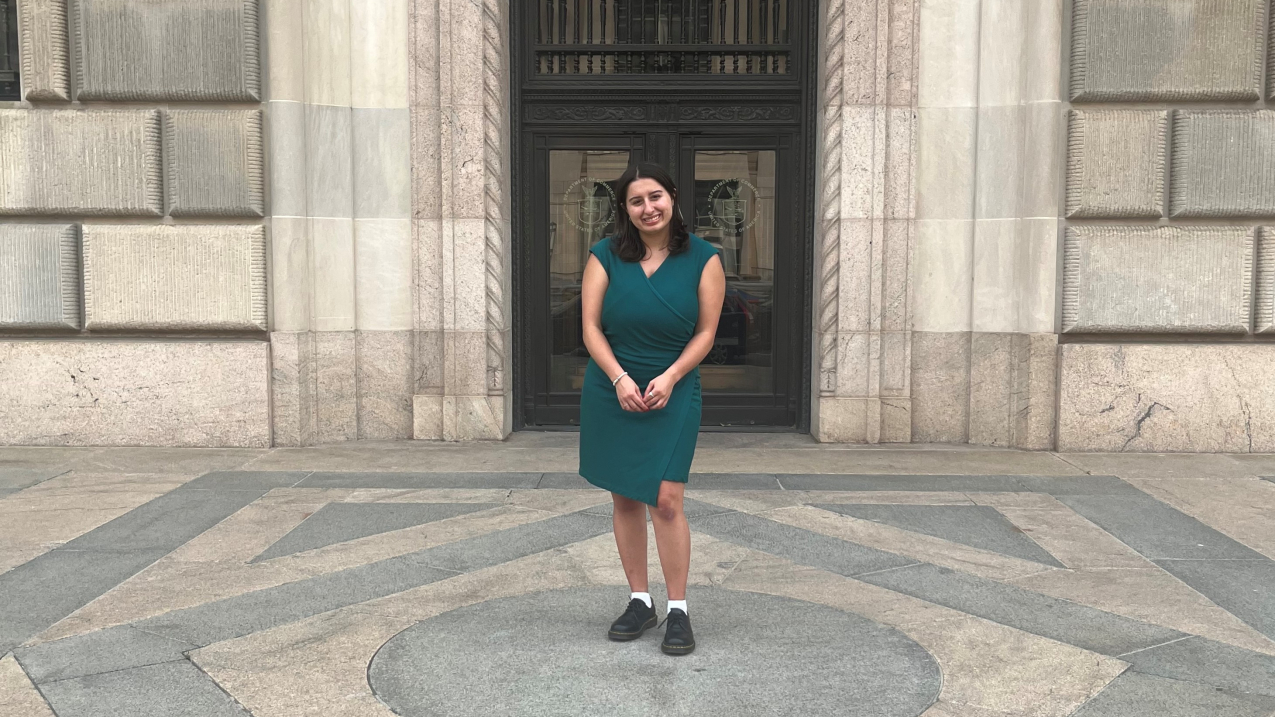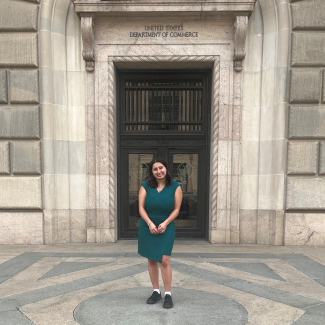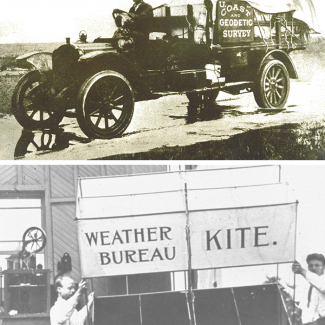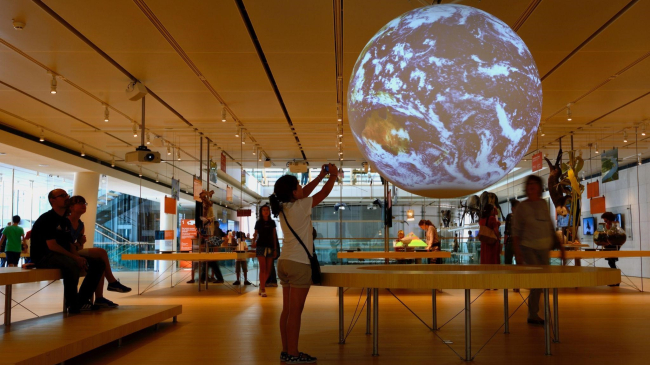Hi, my name is Maria and I am a Future Leaders in Public Service offsite link intern in the Office of Talent Services at the Department of Commerce (DOC). This summer I am working on a variety of projects to help develop early career talent within the Department of Commerce. During my internship, I also had the opportunity to speak with several people at NOAA to learn more about the agency and how I can get involved in their work.

Maria Tedesco, a Future Leaders in Public Service intern, after she completed the first day of her 2023 summer internship at the Department of Commerce. (Image credit: Robert Girtman)
When I applied to the Future Leaders in Public Service program I had no idea which agency I would work for because the program places you in one of the agencies that are offering positions during the time you apply.
When I was placed and hired in the Office of Talent Services, I was excited and interested in the office’s work and mission. I had enjoyed previous experiences in marketing and research work and was excited to work on a project that would help young people get more involved in the federal government. However, I was also very interested in working with NOAA and I still wanted to take advantage of working in the agency that houses NOAA.
Thanks to my internship supervisor, I was able to talk to a handful of NOAA employees including scientists and directors. Coming into my internship, I thought I would only be able to learn from a few NOAA employees, but I have learned so much about the agency, why it is housed in DOC, and how my degree can be applied to a career in government.
What I learned
How NOAA was established
One of my main curiosities stemmed from why NOAA is housed within the Department of Commerce. Now, I know the U.S. Coast and Geodetic Survey was first established to survey and chart the U.S. coast and increase maritime safety. The development of nautical charts also allowed for more trade between the United States and other countries. In the 1970s, the U.S. Coast and Geodetic Survey was brought together with The Weather Bureau and the U.S. Commission of Fish and Fisheries to form NOAA under the Department of Commerce.
I learned this thanks to Dr. Philippe Hensel who works for the National Geodetic Survey. Although the office performs different tasks today due to technological advancements, NOAA still surveys land and creates nautical charts for ocean ships.
Learn more about NOAA’s history
The National Weather Service
My first introduction to NOAA was through the National Weather Service, where I spoke with Dr. DaNa Carlis, the Director of the National Severe Storms Laboratory in Oklahoma. Through our conversation I learned that the laboratory not only studies storms to increase warning time, but also how storms form and affect the environment. Dr. Carlis mentioned the different instruments used to execute these projects.
The Office of Water Prediction, which falls under the National Weather Service, focuses on water resources science and prediction, such as projects related to water management and supply and flood warning.y. After my conversation with Dr. Tom Graziano, I learned how strategic planning and innovation in the office recently paved the way for funding from the Bipartisan Infrastructure Bill. This will allow the Office of Water Prediction to expand their research on water resources, improve prediction and flood mapping, and support public safety as well as water and national security for years to come..
What’s next
As my internship comes to a close, I wonder how I can continue to use all the knowledge I gained. After talking to Dr. Alesia Read, the Chief of Staff of the Office of Habitat Conservation, I know how I’m going to put my skills and knowledge into practice. Dr. Read suggested I take a step back and think about how what I’m learning is connected to what NOAA wants to achieve. We also discussed how important analyzing and putting yourself in the shoes of different stakeholders when connecting science and policy.
During this upcoming semester, my goal is to make connections to what I’m learning in my environmental science classes to what I learned in my internship. For example, I am taking a class on marine conservation and I would love to be able to connect what I learned over the summer to my coursework and with my professors.
However, I want to take my skills a step further. I would love to also discuss my coursework and any research I participate in with the connections I made at NOAA. Overall, I may have been a small fish in a big commerce pond, but I think I was able to find my way within my internship.

Maria Tedesco, Future Leaders in Public Service intern
Maria is a journalism and environmental studies double major at American University in Washington, D.C.




